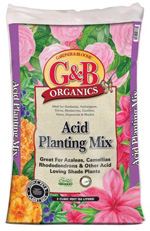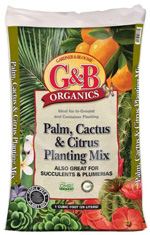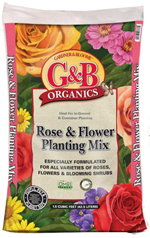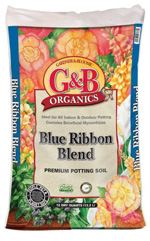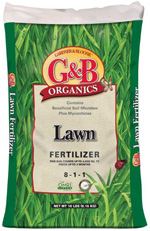|

|
 |
Featured Quote: "In joy or sadness, flowers are our constant friends." |

|

|
|


|
When the weather is hot and dry and there is no measurable rain, even rookie gardeners are aware that most plants will not survive without regular watering. Unfortunately, one reaction to this problem is to stand with hose in hand and squirt water on the plants or on the surface of the ground around them. This does nothing but dig up the soil. Wise gardeners give their plants the amount of water each one needs in ways that save time, effort and water. It is important to use the right equipment. Much water can be saved in the summer by watering each part of the garden by a method appropriately suited for it. Briefly, hand sprinkling is fine for sprouting seeds, but all other watering should be done with conventional irrigation systems or drip systems. In general, conventional irrigation systems work best for most of the basic landscape, including lawns. Drip systems work best for plants in containers and vegetable gardens. Reserve watering by hose for filling furrows and basins around trees and bushes, when these are not equipped with bubblers. (When you water this way, put the hose right down on the ground, and let the water sink in slowly.) For the month of August, it is best to irrigate deeply once a week or every ten days, even less for many plants, depending on your climate zone and soil. Lawns (with the exception of Bermuda and zoysia) and vegetables, certain annual flowers, and some perennial shade flowers are the thirstiest plants in the garden. Water these as frequently as necessary to prevent wilting. Some plants, such as fuchsias and impatiens, need watering daily when grown in containers. Some drought-resistant native and exotic plants need little summer water if any at all. A good rule of thumb is, native plants that are summer deciduous should never be watered during the hot summer months or they'll die from root rot. Some native plants that don't drop their leaves in summer should be watered only if they show severe wilting and, even then, watered sparingly if in clay soils. Other plants recommended for their resistance to drought will look better if watered deeply at least once during August. Water all pine trees deeply as needed--usually once every three weeks--to prevent stress in hot weather, which invites attack from bark beetles. Subtropical trees--including coral trees and floss silk trees--should be watered deeply, early in the month. Allowing chorisia to go on the dry side in late August often contributes to more spectacular fall bloom. Remember to keep your eye out for signs of stress and think of each plant as an individual; water accordingly. With deep, infrequent waterings teach them to send their roots far into the ground so that when there's a drought they will survive. Be sure to give special care to plants in containers. Plants in containers often suffer at this time of the year. Water them frequently. In interior zones containers often dry out as soon as they're watered. It's not only the heat; the dry air literally pulls the moisture out of the soil right through the sides of terra-cotta pots. Terra-cotta containers add charm to gardens and patios, but unfortunately for aesthetics, most plants actually grow much better in plastic. The idea that plants are helped by a pot that "breathes" is mistaken. The soil mix itself should breathe. It should be light and airy; use a good planting mix-- never use garden soil in a pot. In containers that breathe, roots follow the water as it escapes through the sides of the pot. They form a soil mat that clings to the inside of the pot, drying out daily and causing the plant to wilt. When plants are grown in plastic, the roots tend to form more evenly throughout the mix. (Eventually they congregate at the bottom and wind around the sides, but then it's time to pot them on to the next size up.) Before planting in porous containers seal the insides with a double coat of black waterproofing tar, to help prevent escape of moisture. Take good care of your container plants and garden beds in the month of August, and you will be well rewarded throughout the rest of the year. |
They Might Be Giants |

|
|
By Tamara Galbraith The giant whitefly, also known as Aleurodicus dugesii, packed its bags in its native Mexico and has been advancing like a tireless army into the western and southern U.S. First discovered in San Diego County in 1992, the giant whitefly is now found in Southern California, plus parts of Arizona, Louisiana, Texas, and Florida. It has also been a problem for Hawaiian residents in the recent past. As you might guess, the giant whitefly gets its name from being a somewhat larger version of the common whitefly. Adults have highly patterned wings that are positioned in a tent-like fashion over the body. Its calling card, however, is the sticky, white, cotton candy-like mess it deposits on leaves, giving the leaves an almost bearded look. Eggs are often laid amongst these waxy deposits. Unfortunately, giant whiteflies can also make a mess of the health of your plants. Just as with regular whiteflies, they can literally suck the life out of your plants. Giant whiteflies are especially attracted to hisbiscus, banana, mulberry, certain varieties of citrus and avocado trees and even vegetables. Take Down Garden Spray (contains Pyrethrins & Canola Oil) is very effective in knocking down Giant Whitefly. Scientists continue to make progress with parasitic wasp studies for commercial growers in affected regions. These studies involve the use of tiny wasps that actually lay their eggs right in the whitefly. As the wasp larvae hatch, they feed on the whitefly, killing it...which is pretty much of a fitting end for these nasty pests! |
 |
|
Can I save my plants that have shriveled up from the heat? Answer: (Think walking in the desert without water.) Plants need moisture to keep the cells in their leaf tissues healthy. If there is no moisture for the plant to take up, the cells will burst and the foliage will start to shrivel and burn in the areas farthest from the root ball (source of water) and work its way towards the center of the plant. When plants are first stressed, they will show you by wilting. When watered within a few hours of wilting, most plants will perk up and look just fine again. They may be saying a few choice words under their breath at you, but all will be forgiven. But if your plant is shriveled and burned, it means your plant was neglected and you could be facing five to ten for plant homicide. If the plant is in the ground, water the root ball with your hose. Turn the water so that the hose is only slowly dripping. Water for 1-2 hours or until the root ball looks fully saturated. If it's in a container, try to soak the entire container in a bucket of water until it has fully absorbed enough water and the container is heavy again. Then continue on a regular watering schedule. Do not fertilize your stressed plant to "help" it recover. |

|
Summer is perfect for grilling! This quick marinade makes flavorful, juicy chicken ready for the grill in less than 30 minutes. Serve with homemade potato salad and grilled vegetables for a great summertime dinner in less than an hour.
Step by Step:
Yield: 6 servings. Recipe courtesy of "Cooking for Pleasure" by Jeanine Harsen. |
 click here for a printer friendly version of this page
click here for a printer friendly version of this page |
Written content © 2004-2014 Garden Partners LLC, or respective authors. All Rights Reserved. Privacy Policy. All written content contained in this site is protected by United States copyright law and may not be reproduced, distributed, transmitted, displayed, published, or broadcast without prior written permission of Garden Partners, LLC. You may not alter or remove any trademark, copyright or other notice from copies of the content. Would you like a newsletter like this for your nursery or garden center? Please feel free to look at what we have to offer and contact us for your garden center marketing solutions. |




